
Lesson 1 of 9
Introduction
🎬Watch the introduction video below to learn why it is important to understand what is appropriate workplace behaviour.
Video
Video-Introduction to appropriate and inappropriate workplace behaviours
Transcript
Welcome to “Appropriate Behaviours in the Workplace – what’s ok and what’s not “
In response to the Commission of Inquiry into Organisational Sexual Abuse, Tasmania now has an Act, called the Child and Youth Safe Organisations Act 2023, which aims to protect young people under 18yo.
As you prepare to enter a workplace, this module will guide you on the standards of behaviour expected to ensure a safe and respectful work environments for everyone.
The module is made up of 9 lessons, each of which have a video or multiple videos to watch, some additional information and a knowledge check activity or general activity to complete.
Once you complete the knowledge check, a continue button will appear, enabling you to move to the next lesson. If you need to exit the module and return later, you can use the navigation button on the left side of your screen. This will show your completed lessons and where to resume.
Remember!
If you feel upset or stressed don’t hesitate to:
- take a break,
- talk to someone you trust—like an adult or a friend.
- reach out to support services like Kids Helpline(opens in a new tab) at 1800 55 1800, Beyond Blue (opens in a new tab) at 1300 224 636, or 1800 Respect (opens in a new tab)at 1800 737 732. They’re there to help!
Would you like more information on the above support services? Click the service providers name above to see their website.
Lesson 2 of 9
Appropriate Behaviours in the
workplace – what’s ok and what’s not?!
🎬Watch the video below
Video
Transcript
This module talks about some confronting topics, and it could be distressing or make you feel upset or stressed.
If that happens, don’t hesitate to:
- take a break,
- talk to someone you trust, like an adult or a friend or
- reach out to support services.
They’re there to help.
So, you’re getting ready to explore a job role or career pathway with a host workplace. That’s fantastic. This will allow you to get hands on experience and discover more about the career options you’re interested in.
Your host workplace is a business or organisation that will supervise you when you are: volunteering or working part time outside of school hours, going on a work exposure or work experience activity, or a work placement organised by your school.
Before you start working, it is important that you understand how to stay safe in a workplace. This includes learning about appropriate and inappropriate workplace host and co-worker behaviours, what role they play in creating a safe work environment and where to go for help if you are feeling unsafe.
After finishing this module, you should be able to: understand appropriate and inappropriate employer and co-worker behaviours, spot grooming behaviour and understand and who to go to for help and support.
So, let’s get started.
Click the continue button below to learn about safe work environments.
Lesson 3 of 9
A Safe Work Environment
A safe work environment is one where you feel comfortable, secure, and at ease both physically and emotionally.
🎬Watch the video below to learn more on a safe work environment.
Video
Transcript
A safe work environment is one where you feel comfortable, secure, and at ease both physically and emotionally.
Your employer has a responsibility to make sure that your co-workers know how to behave properly around you and other young people.
This means no bullying, physical or sexual harassment, or abuse.
It’s important to know what is appropriate and what is not, so you can flag when things aren’t right.
It’s all about Respectful Relationships.
As a young person in the workplace, you are protected by laws that keep you safe.
These laws make sure that your rights are respected and that you are treated fairly.
When you start in a new workplace you will do an induction, this is where
you’ll learn more about what is expected from you and others in the workplace.
To learn more about what may be in a workplace induction watch the video found by clicking the ‘Workplace Induction’ tab.
🎬Watch the video below to learn more about workplace inductions.
Video
Transcript
When you start with a host workplace you will do a workplace induction. Every business has its own way of doing things so their induction process may vary.
However, you can expect to learn all about who your workplace supervisor will be. This will be an adult employee of the host workplace who will be the person to talk to if you have questions and will also help you learn the ropes.
You will learn about the code of conduct. These are the rules about how you and
your co-workers need to behave at work, what is considered good and bad behaviour and what will happen if someone does the wrong thing.
You may also learn about other policies and procedures so what to do and how to do it that are in place to keep you safe and what support is available to help you out if you ever have any issues in the workplace.
With this information on board you will be well equipped to handle anything that comes your way.
Now, scroll down to find a knowledge check activity.
Once you have successfully completed the knowledge check, click on the continue button to
learn about appropriate behaviour in the workplace.
Lesson 4 of 9
Appropriate Behaviours
Appropriate behaviour is all about how you and your coworkers should be treated, and how you should treat each other. It means treating each other with respect, fairness, and keeping everyone safe from harm.
🎬Watch the video below to learn about appropriate behaviours in the workplace.
Video
Transcript
Appropriate behaviour is all about how you and your co-workers should be treated and how you should treat each other. It means treating each other with respect, fairness and keeping everyone safe from harm.
Here, some good examples:
- Being friendly and supportive. Co-workers should be welcoming and friendly, making you feel like you belong in the workplace.
- Offering help and guidance. You’re new and there to learn. Co-workers should be patient and ready to help when needed. They can answer questions and guide you to help you learn and improve.
- Respecting boundaries. It’s really important for co-workers to understand and respect your personal space. People shouldn’t invade your privacy or make you feel uncomfortable.
- Listening and valuing ideas or concerns. Regardless of experience, your ideas and opinions should be heard and valued. Everyone’s ideas matter.
- Providing a safe environment. Co-workers should make sure the workplace is safe for everyone. This involves being aware of potential physical and emotional risks and taking steps to prevent accidents or harm.
It is also appropriate for you to set your own personal boundaries.
Click on the setting your own personal boundaries tab above to learn more.
🎬Watch the video below to learn more about setting personal boundaries.
Video
Transcript
In a workplace, an employer will set their own boundaries to ensure that the relationship they have with their employees is professional.
This helps create and maintain a respectful work environment where the employer can communicate their expectations of you and be unbiased if there are any staff performance
or behaviour issues, it is also appropriate for you to set your own personal boundaries.
Doing this helps your employer and co-workers understand what you are comfortable with and how they can treat you respectfully. Here’s some ideas in how to set boundaries in the workplace:
- Speak up and let coworkers know when you aren’t comfortable with what they are saying or doing.
- Say no to something that makes you uncomfortable. You can offer other solutions if you have them.
- It’s also important to understand that you have a responsibility to accept and respect your supervisor and co-workers personal boundaries as well. This helps create a safe work environment for everyone.
- Find mentors like your host supervisor, school’s work-based learning or VET coordinator or to talk to about setting boundaries and dealing with workplace situations.
By actively setting, maintaining and respecting others personal boundaries, you can help create a healthy and safe work environment and set yourself up for success.
Scroll down to do a deeper dive into being assertive and setting boundaries.
Once you have finished, keep scrolling

Remember!
It is important to understand that you can set your own personal boundaries. You can do this by speaking up if you are not comfortable, perhaps suggesting other ideas or suggestions that might work instead, or saying no if you feel unsafe in a situation. Finding a mentor can give you someone to talk to and get guidance from on how to set your own boundaries in the workplace.
Deeper Dive
There are also web-based resources available like the Kids Helpline’s ‘Being Assertive and Setting Boundaries’. Click here to go to web page button to check it out.
By actively setting and maintaining personal boundaries, you can help create a healthy and safe work environment and set yourself up for success.
Lesson 5 of 9
Inappropriate Behaviours
Your workplace host and co-workers should never engage in behaviours that make you feel uncomfortable, threatened, scared, forced into things, or like you’re being put down or just behaviours that feel intentionally cruel or hurtful.
🎬Watch the video below to learn more about inappropriate behaviours in the workplace.
Video
Transcript
Your workplace host and coworkers should never engage in behaviours that make you feel uncomfortable, threatened, scared, forced into doing things you don’t want to do, or like you’re being put down, or just behaviours that feel intentionally cruel or hurtful.
This includes behaviours like playing pranks, using offensive language, physical or verbal abuse, inappropriate sexual conversations, showing you or asking you for sexually suggestive photos or videos, or talking to you about your or their sexual feelings through text or social media.
It’s also important to understand that you shouldn’t engage in these kind of behaviours either. You should never share images or talk about your sexual behaviours with your coworkers.
Your employer must maintain a safe and respectful environment free from these types of behaviours.
It’s important to know where you can go for help and to understand that you don’t need to deal with inappropriate workplace behaviour on your own.
Let’s go a little further into how to identify and what to do if someone behaves inappropriately.
Now, scroll down to the knowledge check below.
Once you have finished the knowledge check, click the continue button to learn more about inappropriate behaviours.

Remember!
You do not need to deal with inappropriate workplace behaviour on your own.
Lesson 6 of 9
Types of Inappropriate Behaviours
The below categories don’t cover everything. If you feel like you’re experiencing inappropriate behaviour, but it doesn’t fit into one of the categories – that doesn’t mean the behaviour is ok!
The number one rule is to listen to your instincts.
If it’s doesn’t feel right, it’s not ok, and there are people to help you.
Click on the tab buttons below to learn more about different types of inappropriate behaviour.
🎬Watch the video below to learn more about bullying in the workplace.
Video
Transcript
Workplace bullying is when someone repeatedly treats you, a co-worker or a group of co-workers, unfairly posing a risk to their physical and mental wellbeing.
Examples of behaviours, whether intentional or not, include abusive, insulting or offensive
language or comments unjustified criticism or complaints, deliberately excluding you from
workplace activities or even not telling you information you need to do your work properly,
setting unreasonable timelines or constantly changing deadlines spreading incorrect
information about you or nasty rumours.
Workplace bullying can be verbal or physical, done in person or online, through social media,
or through email or text messaging. It can be obvious, overt or hidden, covert.
It may also occur inside or outside of working hours.
Is it bullying?
Sometimes a behaviour you’re experiencing might not be considered bullying, but if it makes you feel uncomfortable, it can still be harmful.
It’s also important to recognise that some usual workplace conversations might feel personally offensive, but if they’re done in a respectful way, are a normal part of working for an employer.
For example:
- being given fair and reasonable feedback on how you’re going,
- being fairly allocated work, having expectations set around how the work should be done.
If these things are done respectfully, they can be a great learning experience and help you
understand how to meet standards in a workplace. If they’re done in a way that feels rude,
aggressive or unfair, then it’s worth talking to your supervisor or teacher.
Click the tab above to learn how to identify harassment in the workplace.
🎬Watch the video below to learn more about harassment in the workplace.
Video
Transcript
Harassment (including sexual harassment) can take many different forms.
It can be physical, verbal abuse, requests for sexual favours or assault.
It can also be behaviours which offend, humiliates or intimidates you or someone else.
Forms of harassment can include:
- physical harm,
- emotional manipulation,
- sexual innuendo,
- comments about your looks or body parts,
- inappropriate physical contact,
- asking for dates (but not taking no as an answer), asking you to take and send explicit images,
- asking about your sexual activities, or showing you pornography or sexual images
Remember, it is never your fault if you are feeling unsafe because of the way someone is treating you.
If you are unsure talk to a trusted adult and remember, trust your instincts. Your instinct is very good at telling you when something feels off.
Click the tab above to learn about physical abuse in the workplace.
🎬Watch the video below to learn more about physical abuse in the workplace.
Video
Transcript
Physical abuse is when someone deliberately hurts or harms another person.
Physical abuse could include things like hitting, slapping, pushing, dangerous pranks or degrading initiation rituals and any other form of physical harm.
It’s not acceptable and it creates an unsafe and harmful environment.
If you or someone else is experiencing any of these or any other harmful behaviour, speak up and seek help.
It’s important that your employer maintains a safe and respectful environment free
from these types of behaviours.
It is against the law to physically harm another person.
If you’re worried, unsure or not feeling safe, talk to a trusted adult or friend.
If you think you are in immediate danger, call the police.
Click the tab above to learn how to identify sexual abuse in the workplace.
🎬Watch the video below to learn more sexual abuse in the workplace.
Video
Transcript
Sexual abuse is when someone does things of a sexual nature that you don’t want or agree to.
It could be comments, touching, or anything that makes you uncomfortable.
It’s not okay and it’s important to speak up if it happens.
Always remember, it is never okay for an adult to engage in sexual activity with a child or young person. This even includes people who are only a couple of years older than you. It’s called child sexual abuse and it’s against the law.
You have the right to say no to things you don’t like or think are wrong. Even if someone tells you that you can’t. A good rule to follow is that if it doesn’t feel right, you should tell someone you trust.
The same applies to things that young people around your own age or older than you might do. Sometimes young people do sexual things to other young people that are unwanted and harmful and make you feel uncomfortable and unsafe. They might talk sexually to you, touch or grope you, or send you sexual photos and videos. This is also never okay.
If you’re worried, unsure or not feeling safe, talk to a trusted adult or friend.
If you think you are in immediate danger, call the police.
Sexual abuse is not part of a normal relationship. It is not a sign of love and it is never a child’s or young person’s fault.
Click the top right tab to move along to the video on grooming.
🎬Watch the video below to learn more sexual abuse in the workplace.
Video
Transcript
Grooming is when someone tries to build a connection with a young person to
take advantage of them or control them.
It’s not just a one time thing, it’s a series of actions aimed at gaining trust and influence.
Grooming is against the law.
If you think someone is trying to groom you or another young person, tell someone, even
if you are not 100% sure. Groomers might use compliments, lots of gifts, secrets, inappropriate discussions and manipulation to create a sense of trust and dependence.
The ultimate aim is to exploit you or another young person for harmful purposes
like sexually, financially or in other ways.
It’s important that you can recognise signs of grooming and seek help.
If you feel you or someone is being targeted, take a look at Alex’s story below and see if you
can see the warning signs or red flags.
It’s important that your host workplace maintains a safe and respectful environment, free from these types of behaviours.
Lesson 7 of 9
Dealing with Inappropriate Behaviours
Office of the Independent Regulator
If a worker in your workplace displays inappropriate behaviour towards you, as defined by the standards in the Child and Youth Safe Organisations Act 2023, the organisation must report this to the Office of the Independent Regulator. There will be an investigation so that all workers will improve their behaviour in your workplace.
There are many people you can go to get support, talk things through or report inappropriate behaviours. If you feel like you are being bullied or harassed, or come across any inappropriate behaviours at your workplace, you have different ways to deal with it.
🎬Watch the video below to learn more on dealing with inappropriate behaviour in the workplace.
Video
Transcript
There are many people you can go to, to get support, talk things through or report inappropriate behaviours.
If you feel like you are being bullied or harassed, or come across any inappropriate behaviours at your workplace, you have different ways to deal with it:
- If comfortable, start by talking to the person or people directly.
- If this doesn’t work talk to your host workplace supervisor.
This helps to address the issue quickly.
If the one being inappropriate is your workplace host or supervisor, or you do not feel comfortable seek help and support from your:
- Work-based Learning or VET coordinator,
- School counsellor or trusted teacher. Your school has a responsibility to ensure your safety and well-being.
- Don’t forget your family or other trusted adults.
You might not want to speak up when things aren’t right, thinking it may make you stand out or will make things worse. If you’re uncomfortable with someone’s words or actions, finding support can help you build confidence in setting boundaries. Support people can also give advice and support on how to deal with inappropriate behaviours or take action if needed.
You can learn more about these and more supports available at the end of the module.
And remember, if something doesn’t feel right, tell someone you trust. You’re not going to get into trouble for talking to someone. Talking to someone is not dobbing, it’s keeping you and others safe.
Read the recap below and then click on the continue button to learn about types of inappropriate behaviour in the workplace.
If you’re worried, unsure or not feeling safe, there are places you can go for help.
Remember!
If you feel like you are being bullied or harassed, or come across any inappropriate behaviours at your workplace, you have different ways to deal with it.
Don’t forget your family or other trusted adults. You can learn more about these and more supports available at the end of the module.
If comfortable, start by talking to the person directly. Sometimes people don’t realise that they are upsetting you.
If that does not work or you are not comfortable talk to your host workplace supervisor. This helps to address the issue quickly. If they’re the one being inappropriate, seek help from others listed below.
You can also get help from your school’s Work-based Learning or VET Coordinator or trusted teacher. Your school has a responsibility to ensure your safety and well-being. They can offer advice and support when dealing with inappropriate behaviour.

Tip
If you are experiencing inappropriate behaviours in your workplace, it is useful to keep a record of:
- what happened.
- name of the person who spoke or acted inappropriately.
- dates and times.
- if you raise the matter with anyone, and their response.
Lesson 8 of 9
Who is there to Help?
If something has happened or you are feeling unsafe, talk to a trusted adult or friend. Even if you are unsure but something just doesn’t feel right, trust your instincts!
🎬Watch the video below to see who is there to help.
Video
Transcript
If something has happened, or you are feeling unsafe, talk to a trusted adult or friend – even if you aren’t sure but something just doesn’t feel right. Trust your instincts.
If you ever feel uncomfortable or unsafe and you decide to talk to someone, the first person you talk to may not be the right person. You may feel like they haven’t properly heard you. Keep telling other trusted adults or safe people in your life until you have been heard believed and someone is helping you. The right person will listen to you and believe you.
They will work with you not just tell you what to do.
Remember there is no right or wrong person to talk to. Just choose an adult you trust and talk. If you need help and you can’t talk to any safe adults in your life. There are services like 1800 Respect and Kids helpline that are confidential and are just a phone call away.
Scroll down to see more services that are confidential and are just a phone call or web chat away.
There is no right or wrong person to talk to, just choose an adult you trust and talk.
Specific School and Government Supports
Supports are there to help guide you through your work-based learning as well as to advocate for you and support you when things go wrong.
Your first contact will be your school’s Work-based Learning Facilitator or the teacher that has organised the work exposure or experience for you.
Click the cards below to learn about other supports available to you if you need advice or assistance:

More Information
The Vocational Learning team within the Department for Education, Children and Young People (DECYP) in Tasmania plays a crucial role in shaping the vocational education journey for secondary students. This team is pivotal in ensuring that vocational education is both relevant and of high quality, providing students with valuable skills and opportunities.

More Information
WorkSafe Tasmania(opens in a new tab) is the state’s regulator for workplace health and safety. Their mission is to ensure that everyone in Tasmania is “Safe and Well Every Day”.
Helplines and Websites – Tell Someone
If you need help and you can’t talk to any safe adults in your life, the services listed below are confidential and are just a phone call or a web page away.
Click the cards below to learn more about the how they can help:
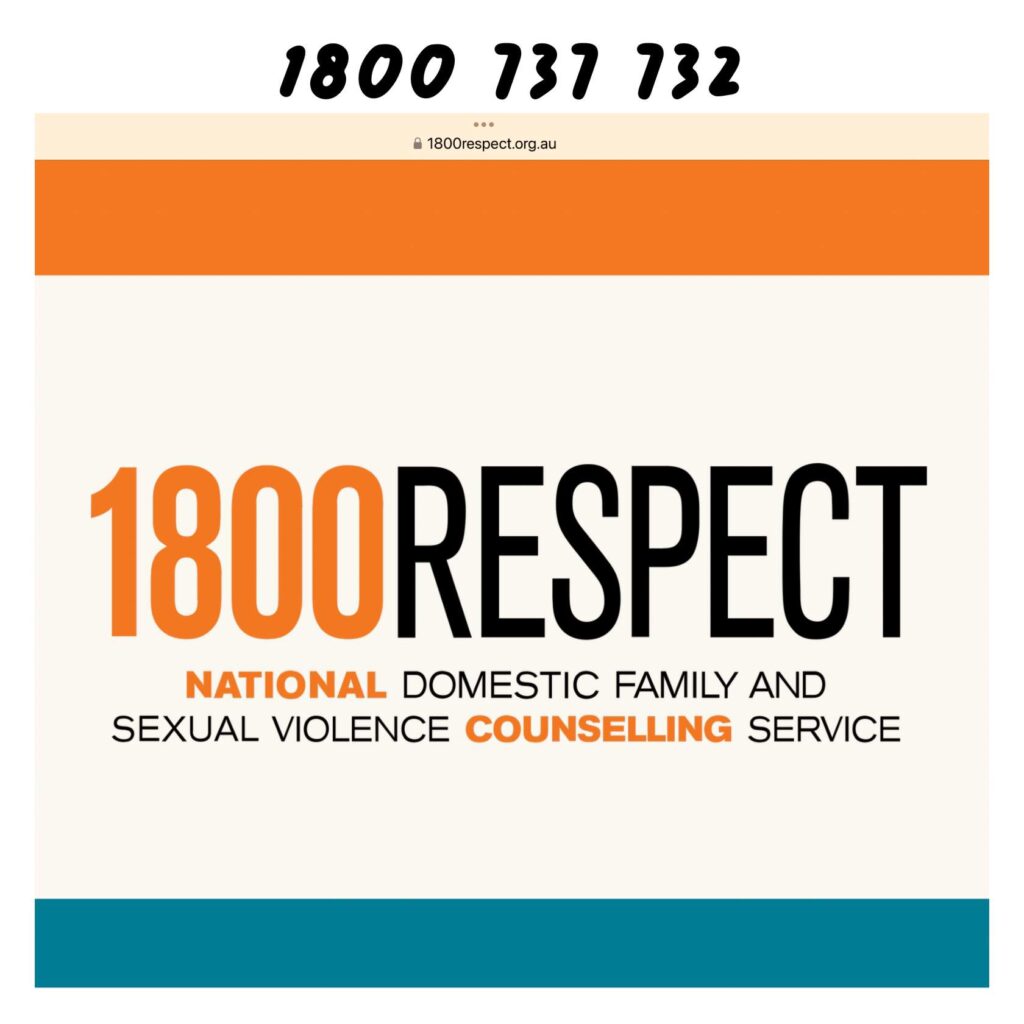
More Information
1800RESPECT(opens in a new tab) is Australia’s national domestic, family and sexual violence counselling service, and is available 24 hours a day, seven days a week.
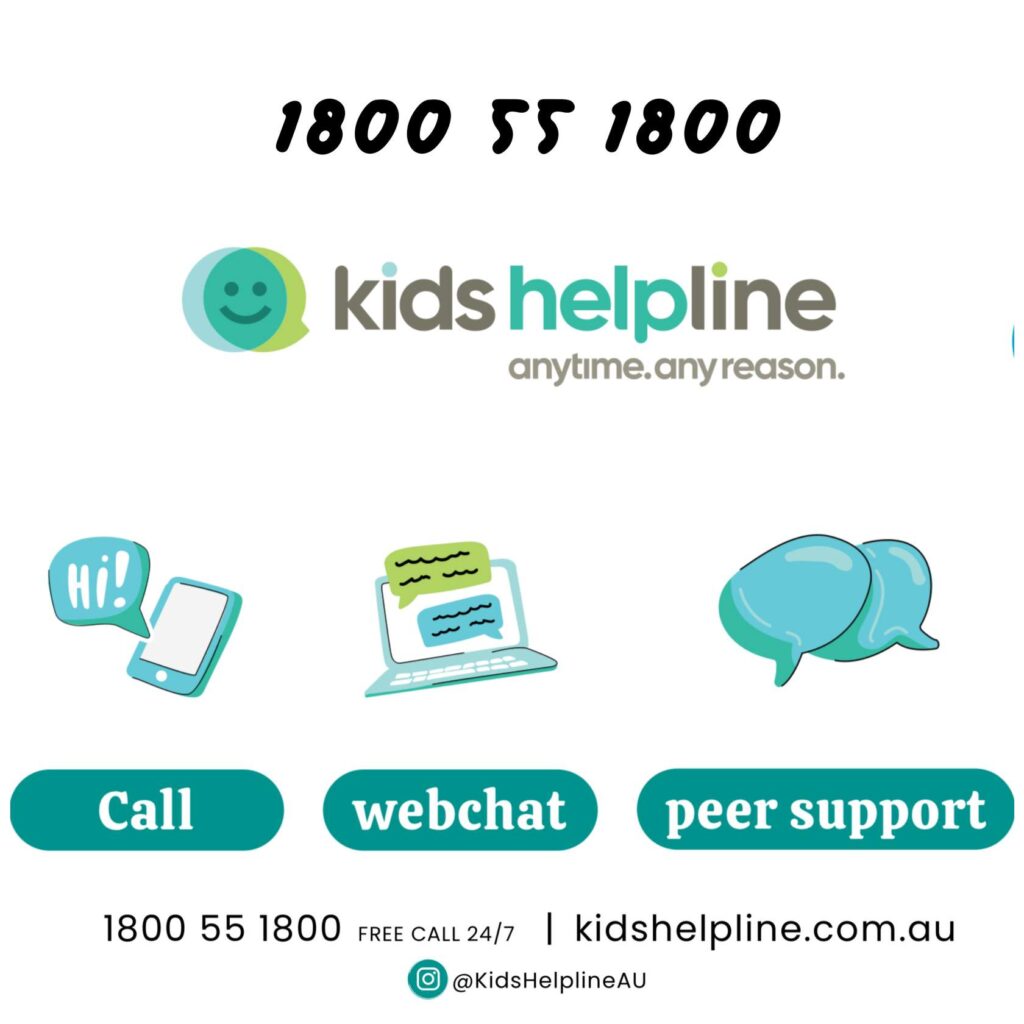
More Information
Kids Helpline (opens in a new tab)is a free Australian telephone and online counselling service for young people aged between 5 and 25.

More Information
13YARN (opens in a new tab)is a national crisis support line for Aboriginal and Torres Strait Islander people who are feeling overwhelmed or having difficulty coping.
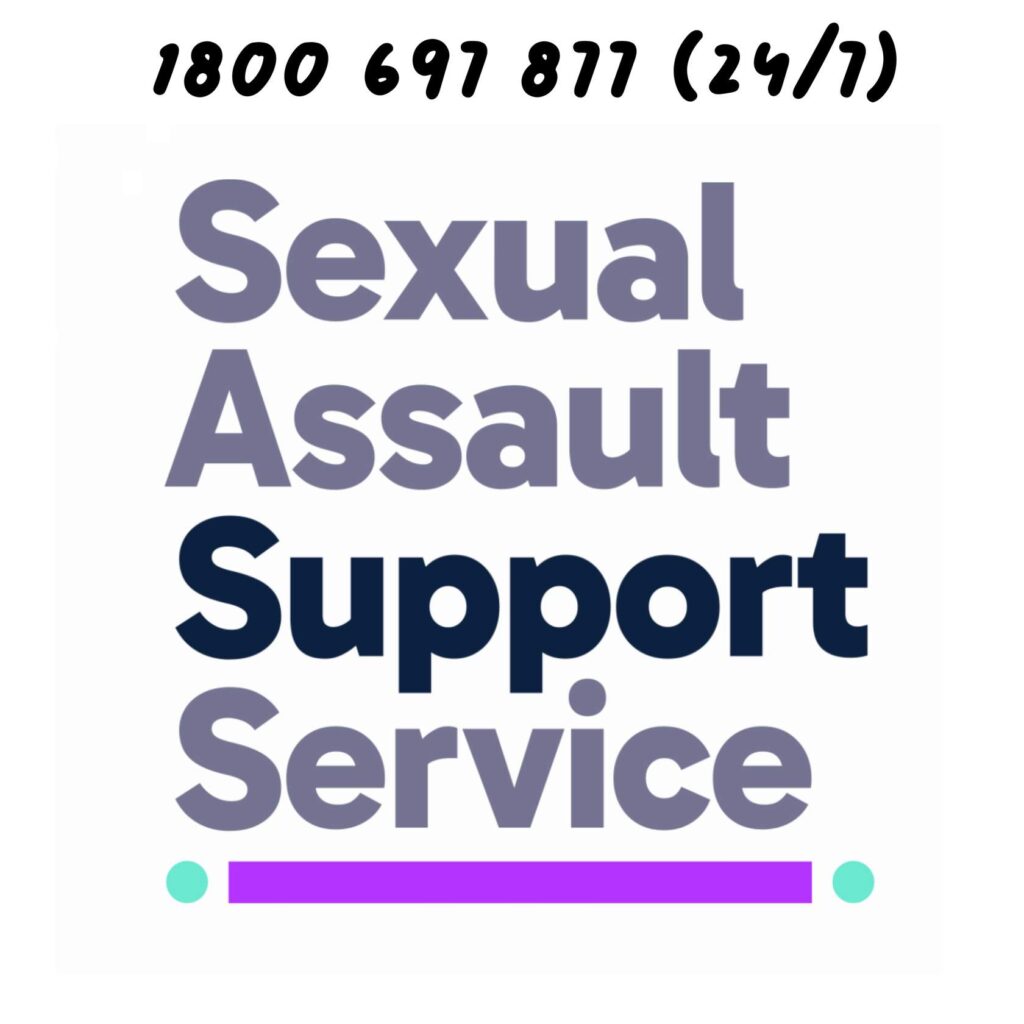
More Information
Sexual Assault Support Service (SASS)(opens in a new tab) is a free and confidential service for:
- children and young people displaying problem sexual behaviour or sexually abusive behaviour.
- people of all ages affected by any form of sexual violence
- people experiencing trauma responses (including high levels of distress or anxiety) as a result of recent or historical sexual assault
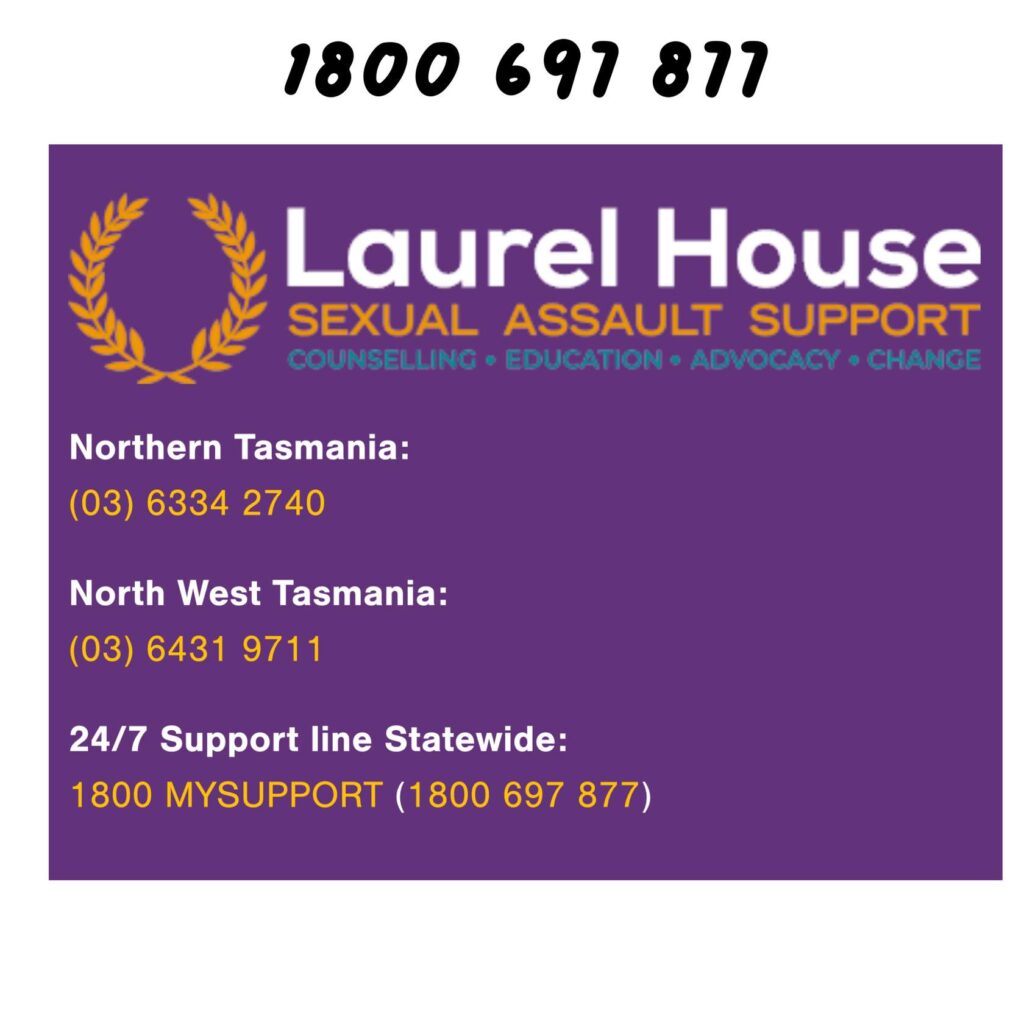
More Information
Laurel House(opens in a new tab) is a sexual assault support service that operates across the North, North-East and North-West Tasmania.
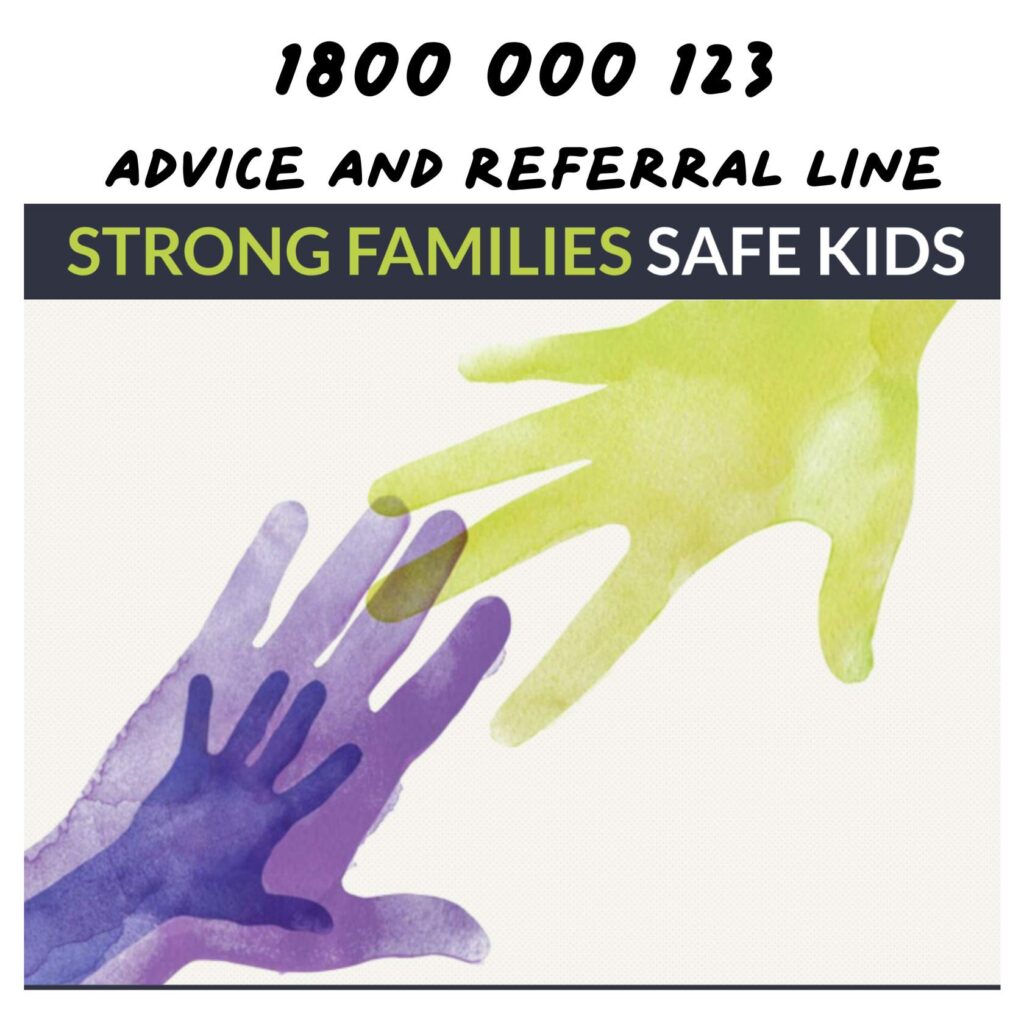
More Information
STRONG FAMILIES SAFE KIDS(opens in a new tab) advice and referral line is the first point of contact for child wellbeing and safety.

More Information
Beyond Blue(opens in a new tab) is an Australian mental health and wellbeing support organization. They provide a range of services, including 24/7 counselling, online forums, mental health coaching, and resources for people dealing with anxiety, depression, and suicide prevention.
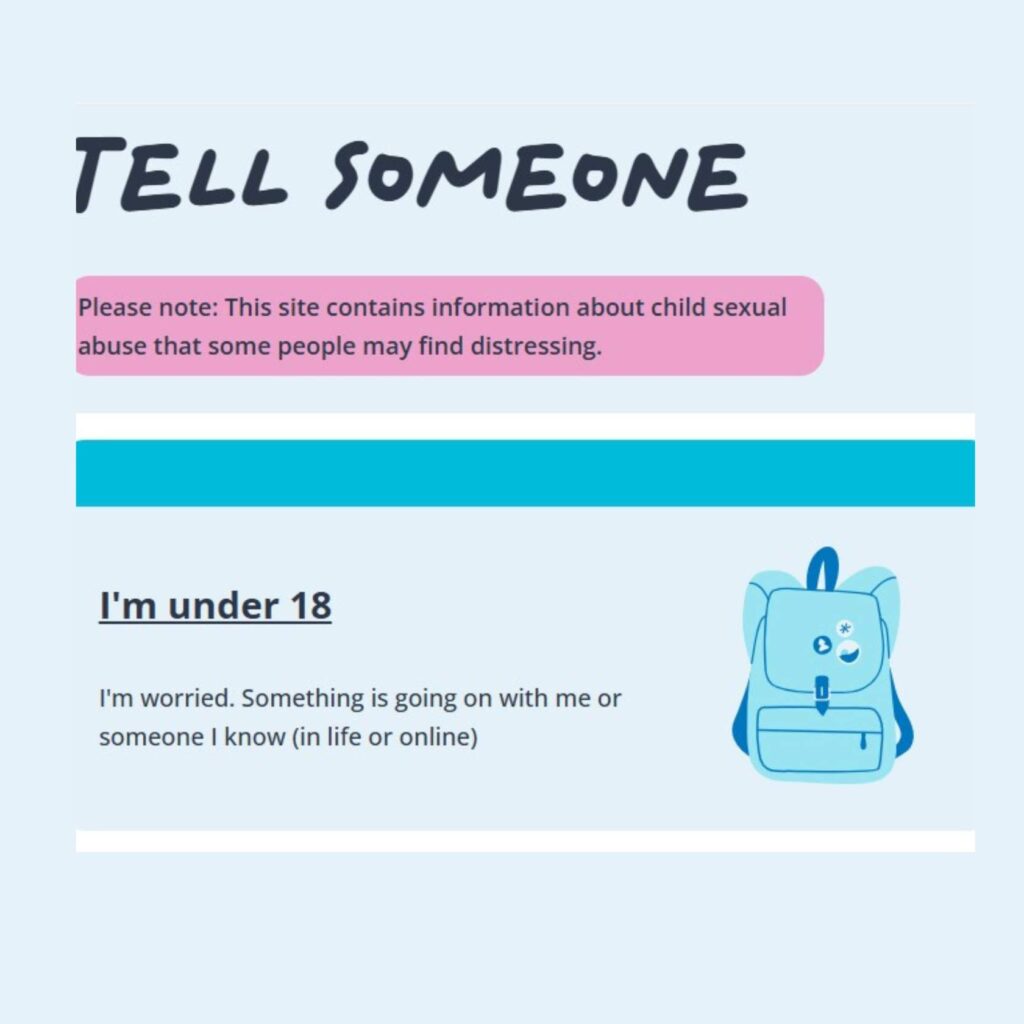
More Information
The Tell Someone (opens in a new tab)site is an initiative by the Tasmanian Government to provide information, support, and contacts for individuals affected by child sexual abuse and grooming. The website offers resources tailored to children, parents, carers, and community members, helping them understand what to do if they suspect or know a child is at risk.
Activity – Who are your trusted people
Identify Your Trusted contacts
Think about who you may turn to if you need help or advice.
- open the support and contact details form by clicking the button below
- Type in the names and contact details of your trusted people
- Save your Trusted Contacts Form to your computer or device.
Lesson 9 of 9
Wrap up
Transcript
We’ve covered a lot of important information in this module about appropriate and inappropriate workplace behaviours.
Some key things to remember are:
Your safety and wellbeing is the most important thing.
you have a right to feel safe and respected in your host workplace.
Inappropriate behaviours like bullying, harassment, grooming or abuse are never okay.
Trust your instincts.
If anything feels off or makes you uncomfortable, speak up and seek help from a trusted adult.
You don’t have to deal with issues alone.
You will not get in trouble.
No one will laugh at you.
If you talk to someone about inappropriate behaviour of a coworker or workplace host, set personal boundaries and stand up for yourself respectfully.
Make sure others understand what behaviours you find acceptable or unacceptable.
Recognise warning signs like excessive compliments, isolation, secrecy or pressure that could indicate grooming.
Report any concerns right away if you have issues.
Supports are available from your workplace host or supervisor, a trusted teacher to friends, family or helplines.
Don’t hesitate to use the contacts and resources provided if you need advice or assistance at any time.
Congratulations
You have now finished Appropriate behaviours in the workplace- what’s ok and what’s not?!
MPORTANT for Public School (Government School) Students: Please let us know when you’ve completed this module. This is an important part of the Work-based Learning process.
To do this:
Click on the “Verify Completion” button below. This will take you to a Microsoft Form.
Fill in the requested details in the Microsoft Form.
Submit the form. Your details will then be automatically sent to the DECYP Apprenticeships Team
All students: you can also create a certificate of completion for your own records. To access your certificate, follow the instructions below.
- Click on the certificate button below
- Fill in your name on your certificate
- Email to your VET facilitator/or teacher coordinating your work placement.
- Keep a copy on your device, along with your list of contacts.
The following sources have been used in the development of the course.
- About the Advice and Referral Line – Strong Families Safe Kids
- Child and Youth Safe Organisations – Framework: www.justice.tas.gov.au/carcru/child-and-youth-safe-organisations-framework#Tasmania
- Child Safety – Child Sexual Abuse/Grooming: www.childsafety.gov.au/about-child-sexual-abuse/grooming
- Daniel Morcombe Foundation: danielmorcombe.com.au/
- DECYP – Safe Children: www.decyp.tas.gov.au/safe-children/
- DECYP WBL Policy
- DECYP The Delivery of Work-Based Learning to School Students (Requirements and Guidelines)
- My Futures – Workplace Toolkit myfuture.edu.au/docs/default-source/default-document-library/student-work-experience-toolkit.pdf
- Raising Children- Grooming: raisingchildren.net.au/school-age/safety/online-safety/grooming-signs
- Sexual harassment in the workplace – Fair Work Ombudsman
- Strong Families Safe Kids – Call 1800 000 123
- Tasmanian Government: Keeping Children Safe
- Tasmanian Government: Tell Someone
Appropriate Behaviours in the Workplace: What’s ok and what’s not © 2024
by Department for Education, Children and Young People, Tasmania is licensed under CC BY-NC-SA 4.0

